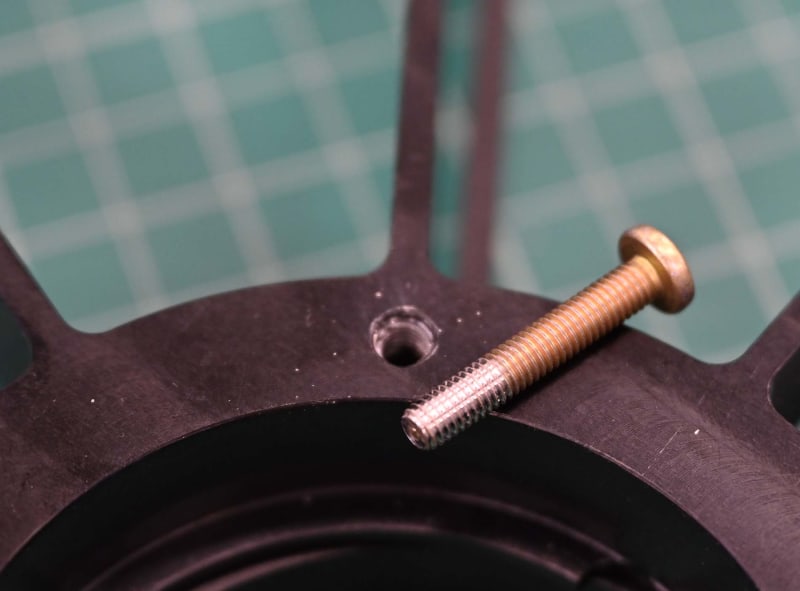Hi guys.
We have an aluminum part (7050) with several 10-32 tapped Helicoil holes. The Helicoils are the "screw locking" variety.
When we install the fastener, the fit is tight, as you would expect. But the Helicoil seems to strip the cadmium plating off the screw. Is this normal? See attached photo, where we ran a test screw into the part.
We removed the Helicoil and ran a tap into the hole, and the hole is the correct dimension (the tap didn't remove a meaningful amount of metal). We then reinstalled a new Helicoil, and tried a new screw, and still got the same result where the plating appears to be stripped...
Thank you!
Jon

We have an aluminum part (7050) with several 10-32 tapped Helicoil holes. The Helicoils are the "screw locking" variety.
When we install the fastener, the fit is tight, as you would expect. But the Helicoil seems to strip the cadmium plating off the screw. Is this normal? See attached photo, where we ran a test screw into the part.
We removed the Helicoil and ran a tap into the hole, and the hole is the correct dimension (the tap didn't remove a meaningful amount of metal). We then reinstalled a new Helicoil, and tried a new screw, and still got the same result where the plating appears to be stripped...
Thank you!
Jon

